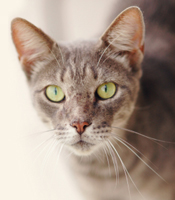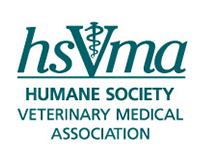| Advocacy | |
Veterinary Hospice
|
| Join us April 15, 2015 for a webinar on end-of-life care presented by Dr. Yaxley. Learn more» |

As the human-animal bond grows, more and more people are choosing veterinary hospice to ensure compassionate end of life care for their pets.
iStockphoto
In recent surveys, 80 percent of Americans say they view their pets as part of their families.1,2,3 Indeed, the role companion animals play in our lives is evolving, and the human-companion animal relationship has become one of our most consistent ones.
Another aspect of society that is evolving is the way in which humans die. More people are choosing to be under the care of hospice at the time of their deaths.4 Hospice embraces the philosophy of ensuring compassionate end of life care; providing comfort to the patient, and emotional support and education to the family, allowing them time to prepare and plan for the impending death. Thanks to the Medicare hospice benefit, hospice services are provided free of charge to Americans facing life-ending illnesses. And people are more apt to take advantage of hospice if they discuss this option with their health care professionals.4 Hospice recognizes the patient and the family as the unit of care,and has proven to benefit patients by supporting their mental, physical, emotional and spiritual needs, while helping their families cope with the loss of their loved ones.
Veterinarians have a unique role within the allied health care professions. Similar to our human medicine counterparts, veterinarians are responsible for the health and wellbeing of our patients. However, veterinarians are unique in that we are often also responsible for their deaths. The Accreditation Council for Graduate Medical Education mandates core curricula on end of life care training for human medical residents. It has proven that educational intervention in end of life care (or “at end of life”) improves both patient wellbeing and doctor longevity and success.5 However, no such mandate exists for educating veterinary students or residents. As such, delivery of end of life care can sometimes fall short of its goals for the veterinary patient and the pet owner. Often owners face life and death choices about their animals with limited options, and they are reliant on their veterinarians for support.
Recognizing these facts, in November 2011 Michigan State University’s College of Veterinary Medicine supported establishment of the second veterinary hospice service within an academic institution.
The core concepts of Veterinary Hospice Care are similar to those of human hospice. However, VHC provides a link between a terminal diagnosis or chronic debilitating disease and death—which, for companion animals, occurs either by euthanasia or palliated, un-hastened dying.
VHC has four main goals:
- Provide an in-home hospice service for terminally ill patients
- Provide ongoing education in end of life care topics to veterinary and veterinary technician students
- Provide outreach and support to the community through educational seminars and relationship-centered communication
- Collaborate with allied health care professionals in end of life care research.
Our hospice service is similar to all other referral services. Individuals may contact VHC directly to make an appointment, or they can be referred by their primary care veterinarians. Approximately one-third of cases presented to VHC have come through referrals from community veterinarians, and one-third through MSU CVM doctors, faculty and students. Approximately 25 percent come via word of mouth, and the remainder come from social media, or radio and television interviews. Patients have come from all over the state, as far away as a three-hour car ride.
The initial visit—in the patient’s home—culminates in a goal-directed, individually tailored patient care plan, which I implement along with our team of trained volunteers and the patient’s family. As is the case with human hospice, family members are expected to provide some level of care, for which they receive support and training through the VHC program. Once enrolled, family members can communicate with me via our 24-hour phone consultation line, as well as during in-person visits that are scheduled based on patient needs. Each week I have contact with the family to ensure that their needs, and the needs of their pet, are being met.

Monika Miner
Max (pictured at right) was one of our patients. After being diagnosed with a brainstem tumor through MRI at another referral hospital, the owner of the 8-year old Labrador was told to simply take him home and wait until "it’s time." Max’s owner was told that it would likely be a matter of weeks, and that she would just "know." It wasn’t until four months later, when Max was still very much alive, that she learned about VHC. After my initial consultation with Max’s family, we tailored a plan for him. We made a plan to palliate his symptoms and preserve his quality of life, but we also helped his owners define their ideal plan for his death. His palliative care plan was adjusted and changed many times as his disease progressed. Max regained the ability to go on walks and enjoy time at the lake during a summer he was not supposed to have. Ten months after his initial diagnosis, Max achieved a peaceful passing in his home, surrounded by his family, through euthanasia. While not all patients are able to achieve Max’s success, most pets and owners find comfort in the support we provide, with the goal of making every day a good one.
